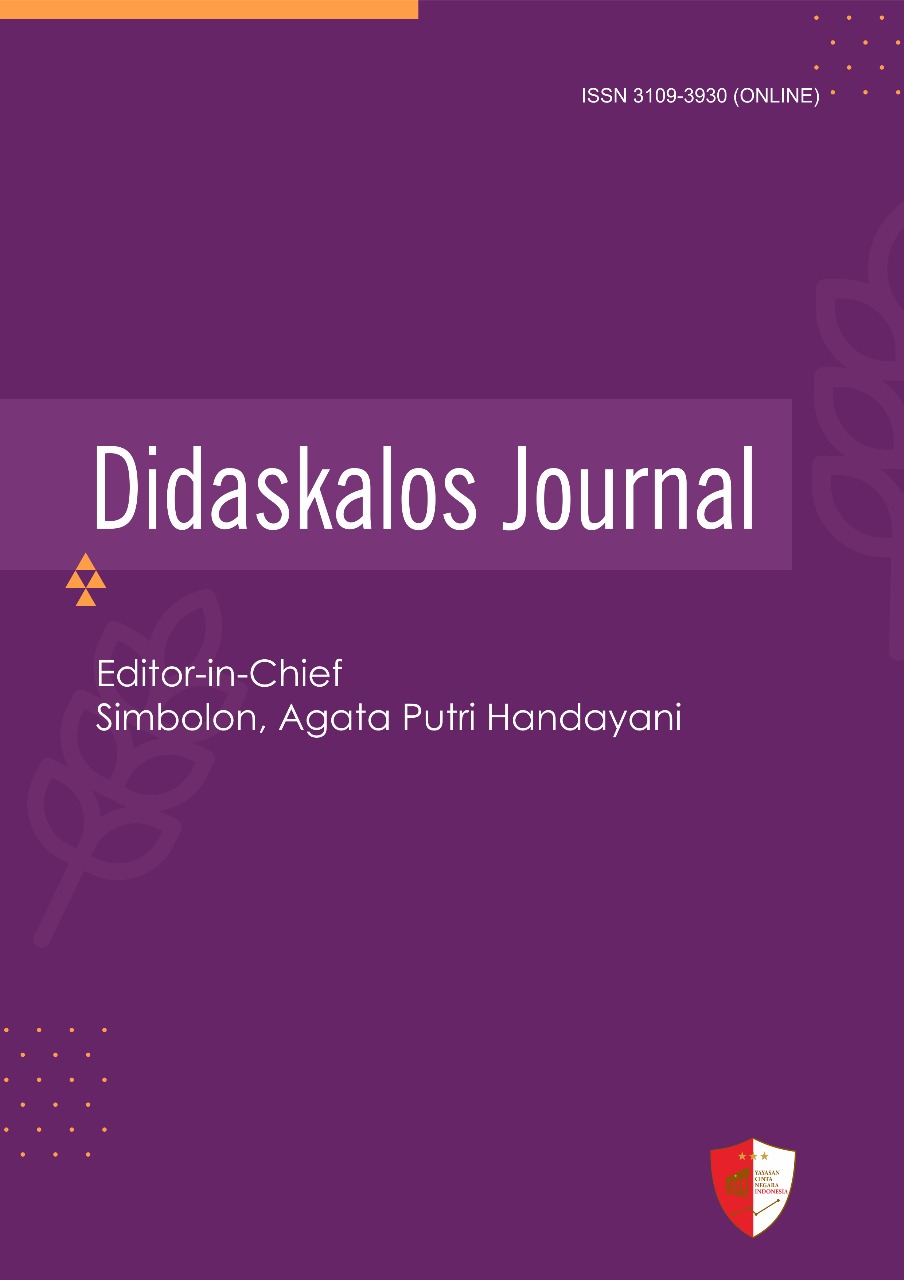Implementation of Local Wisdom-Based Character Education in Elementary School Learning
Keywords:
Academic Achievement, Collaborative Learning, Elementary Education, Individual learning, Learning EnvironmentAbstract
This study aims to compare the effectiveness of collaborative learning and individual learning approaches on students' academic achievement. Using a quasi-experimental design, two groups of elementary school students were observed over a semester. The collaborative learning group engaged in structured group activities, discussions, and peer-assisted tasks, while the individual learning group worked independently on similar content. The results indicated that students in the collaborative learning group demonstrated significantly higher academic achievement compared to those in the individual learning group. Collaborative learning promoted active engagement, peer interaction, critical thinking, and mutual support, which contributed to a deeper understanding of the material. Conversely, while individual learning allowed students to work at their own pace, it lacked opportunities for social interaction and immediate feedback. The findings suggest that incorporating collaborative learning strategies can enhance student achievement by fostering an interactive and supportive learning environment. These results have important implications for educators seeking effective instructional methods to improve academic performance
References
Alghamdi, A. K. (2021). Collaborative learning strategies and academic performance: A meta-analysis study. Journal of Educational Research and Practice, 11(1), 45-60.
Anderson, L. W., & Krathwohl, D. R. (2001). A Taxonomy for Learning, Teaching, and Assessing: A Revision of Bloom's Taxonomy of Educational Objectives. Longman.
Barkley, E. F., Cross, K. P., & Major, C. H. (2014). Collaborative Learning Techniques: A Handbook for College Faculty (2nd ed.). Jossey-Bass.
Berg, C. A. R., & Smith, P. (2018). The effects of collaborative vs. individual learning on students’ learning outcomes in higher education. Journal of Instructional Pedagogies, 20(1), 55-65.
Biggs, J., & Tang, C. (2011). Teaching for Quality Learning at University (4th ed.). Open University Press.
Boekaerts, M., Pintrich, P. R., & Zeidner, M. (2000). Handbook of Self-Regulation. Academic Press.
Brown, H. D. (2007). Principles of Language Learning and Teaching (5th ed.). Pearson Education.
Bruffee, K. A. (1999). Collaborative Learning: Higher Education, Interdependence, and the Authority of Knowledge (2nd ed.). Johns Hopkins University Press.
Cohen, E. G. (1994). Designing Groupwork: Strategies for the Heterogeneous Classroom (2nd ed.). Teachers College Press.
Creswell, J. W. (2014). Research Design: Qualitative, Quantitative, and Mixed Methods Approaches (4th ed.). SAGE Publications.
Dillenbourg, P. (1999). What do you mean by collaborative learning? In Dillenbourg, P. (Ed.), Collaborative Learning: Cognitive and Computational Approaches (pp. 1-19). Pergamon.
Dornyei, Z. (2001). Motivational Strategies in the Language Classroom. Cambridge University Press.
Felder, R. M., & Brent, R. (2009). Active learning: An introduction. ASQ Higher Education Brief, 2(4), 1-5.
Gokhale, A. A. (1995). Collaborative learning enhances critical thinking. Journal of Technology Education, 7(1), 22-30.
Hmelo-Silver, C. E. (2004). Problem-based learning: What and how do students learn? Educational Psychology Review, 16(3), 235-266.
Johnson, D. W., & Johnson, R. T. (2009). An educational psychology success story: Social interdependence theory and cooperative learning. Educational Researcher, 38(5), 365-379.
Johnson, D. W., Johnson, R. T., & Holubec, E. J. (2008). Cooperation in the Classroom (8th ed.). Interaction Book Company.
Kirschner, F., Paas, F., & Kirschner, P. A. (2009). Individual and group-based learning from complex cognitive tasks: Effects on retention and transfer efficiency. Computers in Human Behavior, 25(2), 306-314.
Laal, M., & Ghodsi, S. M. (2012). Benefits of collaborative learning. Procedia - Social and Behavioral Sciences, 31, 486-490.
Lave, J., & Wenger, E. (1991). Situated Learning: Legitimate Peripheral Participation. Cambridge University Press.
Lou, Y., Abrami, P. C., & d’Apollonia, S. (2001). Small group and individual learning with technology: A meta-analysis. Review of Educational Research, 71(3), 449-521.
Mayer, R. E. (2008). Learning and Instruction (2nd ed.). Pearson Merrill Prentice Hall.
McMillan, J. H., & Schumacher, S. (2010). Research in Education: Evidence-Based Inquiry (7th ed.). Pearson.
Mills, J., & Treagust, D. F. (2003). Engineering education: Is problem-based or project-based learning the answer? Australasian Journal of Engineering Education, 3(2), 2-16.
Niemi, H. (2002). Active learning—a cultural change needed in teacher education and schools. Teaching and Teacher Education, 18(7), 763-780.
O'Donnell, A. M., & King, A. (1999). Cognitive Perspectives on Peer Learning. Lawrence Erlbaum Associates.
Prince, M. (2004). Does active learning work? A review of the research. Journal of Engineering Education, 93(3), 223-231.
Putnam, R. T., & Borko, H. (2000). What do new views of knowledge and thinking have to say about research on teacher learning? Educational Researcher, 29(1), 4-15.
Robbins, S. P. (2001). Organizational Behavior (9th ed.). Prentice Hall.
Roseth, C. J., Johnson, D. W., & Johnson, R. T. (2008). Promoting early adolescents’ achievement and peer relationships: The effects of cooperative, competitive, and individualistic goal structures. Psychological Bulletin, 134(2), 223-246.
Schunk, D. H. (2012). Learning Theories: An Educational Perspective (6th ed.). Pearson.
Slavin, R. E. (1995). Cooperative Learning: Theory, Research, and Practice (2nd ed.). Allyn & Bacon.
Stahl, G. (2006). Group Cognition: Computer Support for Building Collaborative Knowledge. MIT Press.
Vygotsky, L. S. (1978). Mind in Society: The Development of Higher Psychological Processes. Harvard University Press.
Webb, N. M. (2009). The teacher’s role in promoting collaborative dialogue in the classroom. British Journal of Educational Psychology, 79(1), 1-28.
Downloads
Published
Issue
Section
License
Copyright (c) 2025 Sariyatun Mulyasa, Budimansyah (Author)

This work is licensed under a Creative Commons Attribution-NonCommercial 4.0 International License.




